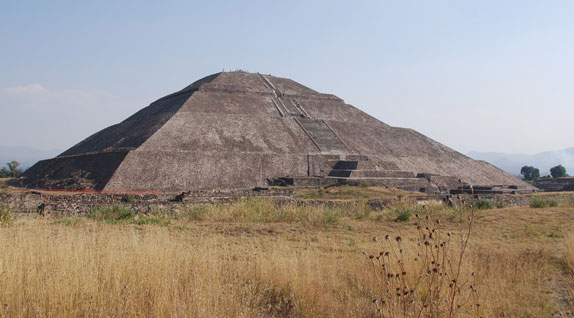 The Real Truth
The Real Truth
Article
While both countries have been defined by geography, political upheaval, even disasters—their ultimate futures are bright.
Learn the why behind the headlines.
Subscribe to the Real Truth for FREE news and analysis.
Subscribe NowArriving at airports in Lima, Peru, and Mexico City, Mexico, is much like stepping into any other modern airport in an affluent Western nation. Check-in desks with well-dressed employees line glass terminals, chauffeurs hold welcome signs for businessmen, and friends and family greet one another with excitement, chatting nonstop about their trips. Even restaurants and stores are the same, with Starbucks, Dunkin’ Donuts, Subway and 24-hour high-end clothing shops common in countries considered to still be “developing.” Indeed, everything contained within each airport makes the term seem antiquated.
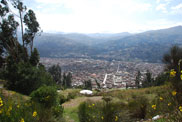 The Real Truth
The Real TruthYet the drives from both airports reveal another scenario: among the high-rise luxury apartments and the occasional Mercedes, many Peruvians and Mexicans live in abject poverty, the kind not commonly experienced in the U.S. and Europe—where the impoverished scrounge for scraps to build makeshift huts, or are forced to make a living begging from passersby.
Although Mexico and Peru have poverty rates of 47.4 percent and 34.8 percent respectively, surrounding countries still consider them economically influential.
“At the beginning of Latin America’s postcolonial history, Mexico and Peru were roughly comparable,” Florencia Mallon writes in Peasant and Nation: The Making of Postcolonial Mexico and Peru. “They had been the great centers of pre-Columbian indigenous civilizations and of Spanish imperial rule. They had the richest silver mines, the wealthiest colonial elites, and the largest indigenous populations in all of Spanish America.”
Even though Mexico and Peru have traveled varied paths since then, a visit to each nation provided an interesting vantage point for another Real Truth writer and me to see that while each possesses its own characteristics, the nations are still tied together by several common threads.
Peru
Stepping into Peru’s streets could only be described as sensory overload—listening to a confluence of people speaking a foreign language—seeing polluted, cramped quarters—smelling savory food from street vendors.
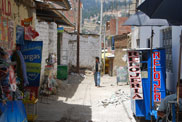 The Real Truth
The Real TruthA drive through the nation’s capital, Lima, and its business district, Miraflores, reveals a stunning acceleration of modernization and Western influence. Elaborate Kentucky Fried Chicken outlets dot the area, and easily visible high-rise buildings now gleam in place of antiquated one-story adobe brick homes.
According to CIA World Factbook, Peru is among the world’s most rapidly developing nations. Almost the size of Alaska, the South American nation ranks 11th in annual GDP growth.
Lima has been a center of trade for 300 years and is a major Latin American shipping port. Because the city’s average elevation is 43 feet above sea level, the climate, which is affected by the ocean’s currents, is comfortably temperate.
Streets teem with chugging taxis, overcrowded buses, and thousands of people. Drivers routinely come within an inch of a vehicle on all sides.
Smog hangs over these traffic jams. Tiny dirt particles fall from the dusty air and settle on vehicles. Bags of garbage are often seen strewn across areas of the city.
In Lima, which is home to about 25 percent of Peru’s 30-million-strong population, it is common for Peruvians to buy pre-fabricated homes for about $1,800 and place them wherever space is available. Many of these tiny houses end up stacked on top of one another. In fact, every home in Peru seems to have steel bars sticking out of its roof—a sign another level could be added by whomever needs a residence.
These cookie-cutter shacks are often built on unstable, sandy hills. This is dangerous given the country’s vulnerability to earthquakes, which often cause landslides that easily topple such flimsy structures.
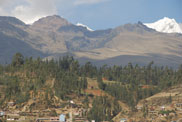 The Real Truth
The Real TruthJust a few hours north of Lima’s bustling metropolis, a road winds through what resembles the Sahara Desert. It then gives way to beautiful and tranquil coastal countryside vistas. The stark contrast continues as one travels toward the world’s second-highest mountain range, the Andes, and heads to Huaraz, a small town situated high in its peaks.
While ascending, we learned the value of Peruvian genuineness and warmth. During a lunch break, a lady stopped us as we boarded our car to ask if we were going north. The translator accompanying us replied that we were. She then told us that approximately 100 kilometers north was a 48-hour farm laborer protest. Many travel books warn that during such demonstrations rocks will often be thrown at bystanders, especially foreigners. She recommended we stay in a hotel because it was not safe to pass through.
We had to continue on, however, and never saw the protests, but we were thankful for her help and the kindness she extended to complete strangers. Such concern was to become a distinguishing characteristic of the Peruvians we encountered throughout the visit.
Mexico
Mexico is the world’s largest Spanish-speaking nation, with a population of 114 million. Its capital, Mexico City, is 7,350 feet above sea level and in the shadow of several active and dormant volcanoes. Approximately 21 million people—a fifth of the nation’s entire populace—sprawl across its 571 square miles.
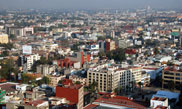 The Real Truth
The Real TruthThe city is situated on an ancient Aztec lake, which was filled in by Spanish explorers. It has now become a thriving city filled with Art Nouveau architectural marvels and perfectly spaced, rainbow-colored row houses that appear to form part of an oversized computer-generated image—instead of the comfortable homes they are.
Similar to Lima, Mexico’s capital has all of the comforts of the Western world—and is even decades ahead of its South American cousin in terms of modernization.
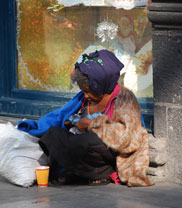 The Real Truth
The Real Truth“Mexico City’s leading position with regard to other urban centres of the developing world can be attributed to its origins in a rich and diverse environment, its long history as a densely populated area, and the central role that its rulers have defined for it throughout the ages,” Encyclopaedia Britannica states.
As with any society, however, Mexico still struggles with various problems. Higher rates of joblessness have pushed some to advertise their skills as day laborers outside churches and on city streets. There have also been more than 35,000 deaths as a result of an ongoing countrywide drug war, and the nation is facing its worst period of drought in 70 years.
Ancient Similarities
Both countries’ histories are permeated by polytheism—and its attendant practices.
Lima is home to an interesting ancient pyramid, Huaca Pucllana. The structure is believed to have been an important civil and religious center. It is estimated to be between 1,300 and 1,800 years old and was important to the ancient Wari culture. It was later inhabited by the Inca. Many times throughout the year, human sacrificial rituals were made at this site to appease their “gods” and make intercession for good fishing throughout the seasons.
Similarly, in Mexico, the ancient city of Teotihuacan was discovered in the late 19th century. The origins of it date as early as 164 BC. Civilization upon civilization of pre-Columbian peoples up to and including the Aztecs have inhabited the city.
Teotihuacan is marked by three main features, the “pyramid of the sun” (whose base is slightly wider than that of the great pyramid of Egypt), the smaller “pyramid of the moon,” and Miccoatli, a word from the native language of Nahua, meaning “avenue of the dead.” As in Huaca Pucllana, residents would gather two times per year to sacrifice young males to the gods, hoping for successful spring and fall harvests.
Religious Roots
In either country, it is nearly impossible to ignore the influence—both past and present—of the Roman church. Large cathedrals, monasteries and religious structures form the nucleus around which most cities are built. These baroque-style buildings stand in stark contrast to modern 21st-century architectural designs.
 The Real Truth
The Real TruthBoth capitals of the predominantly Catholic countries were used as regional headquarters for the infamous Spanish Inquisition, which took place from AD 1478 to AD 1834. These gruesome campaigns are memorialized in museums that display life-sized statues of almost every conceivable method of torture. Their intent is to give visitors a realistic sense of this time period.
Similar to ancient pagan sacrifices and rituals, the brutal and horrific killings during the Inquisition became a part of everyday life for both countries.
Natural Disasters
Some may recall images of rubble-filled towns and villages throughout Peru as a result of a massive 1970 Ancash earthquake. Pictures and videos of the devastated cities Chasma and Huaraz are still readily available on the Internet.
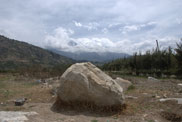 The Real Truth
The Real TruthDuring our travels, we visited another town, Yungay, which was destroyed by the same earthquake. Due to a massive tremor in the region, this former town of a little over 25,000 inhabitants was completely swallowed by a debris flow. According to our tour guide, a wave of 80 million cubic meters of rock, gravel, mud, water and ice—about 200 feet high—crashed on Yungay, leaving it a desolate wasteland.
Only a few survived, including our guide, who was 17 at the time. As the earthquake began, his siblings and parents fled to the church. Since he had forgotten to bring his radio with him so that he could finish listening to the World Cup soccer match, he went back to retrieve it.
As he ran home to find the radio, a giant mudslide overcame the town. The wave of debris tore apart the church in which his family took shelter, killing them. His house, however, was spared.
The Peruvian Times stated that the earthquake lasted 45 seconds and “crumbled adobe homes, bridges, roads and schools across 83,000 square kilometers, an area larger than Belgium and the Netherlands combined.”
All that remains of this former town are four palm trees that once lined the main square, a mangled bus, disconnected segments of a Catholic church, and other miscellaneous debris.
A similar event occurred in Mexico on September 19, 1985. An 8.1-magnitude earthquake struck approximately 220 miles west of Mexico City. This devastating event caused rain-saturated hillsides to liquefy. Buildings in the nation’s capital shook for over four minutes. Certain destroyed buildings have been left as a reminder of this terrible event, estimated to have taken the lives of up to 65,000 people and caused billions of dollars in damage.
While we visited the region, a smaller, yet serious, 6.5-magnitude earthquake struck 40 miles beneath the surface 103 miles to the southwest of Mexico’s capital city. Cries of “terremoto!” (Spanish for “earthquake”) arose as the tremor rocked the area, sending panicked people into the streets, screaming, crying and clutching one another.
In this case, little damage occurred and few lives were lost. But when a person becomes an eyewitness to such events, it is easier to empathize with those who must continue to live their lives in the shadow of awesome, unpredictable power.
Unbreakable Pattern?
The shared language and ethnicity of Peru and Mexico are just two obvious similarities between these nations. In addition, many of their citizens live in poverty and do not see much hope for a better future.
Yet this is just scratching the surface. There are much deeper ties that bind these two cultures together.
Throughout the centuries, their peoples revered natural phenomena as gods and sacrificed human beings to them in an effort to appease these deities, whom they believed were responsible for the weather. With the arrival of the Spanish conquistadors, many converted to professing Christianity and began placing images of what they thought Jesus Christ looked like on giant crosses inside massive churches.
But these religious expressions have been in vain. While there has been some progress, conditions stay the same overall—mothers still lose children to terrible diseases, drug wars continue, weather disasters occur, and both nations seem to suffer almost nonstop.
For many, this seems part of an unbreakable cycle. Truly, the Bible’s saying, “…there is no new thing under the sun” (Ecc. 1:9) rings true.
But there is hope! Future events detailed long ago reveal that these two nations will achieve the greatness to which they aspire—and their cycles of poverty and lawlessness will soon cease.
To learn about this coming time, read Tomorrow’s Wonderful World – An Inside View!



